The City in Design: City as a Museum, Kolkata, 2023Upasana Das December 01, 2023 Bengal has a rich tradition of integrating art and aesthetics into everyday life – be it the alpona art on our doorsteps or the brightly-painted soras that we see around us during lokkhi pujo. Languid eyes, once painted by Jamini Roy, once embedded into the popular culture of the city, peep at us from restaurant menus and pujo pandals. After Tagore visited Japan, he was impressed with the way the Japanese brought their aesthetics to bear upon every aspect of life and made their everyday objects beautiful. A new India with an urban middle class was emerging and artists had to think about designing things for their lives like furniture, crockery, upholstery and clothing. For the third edition of ‘The City as a Museum’, we journeyed through sites, collections and archives, to discover anew aspects of everyday life that have been shaped by Bengal’s rich history of art and design. |
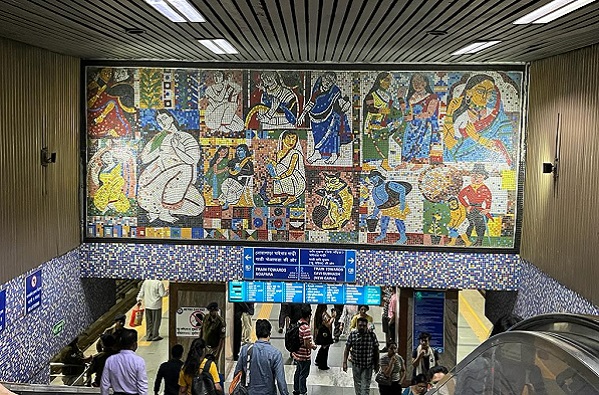
|
‘The Government School of Art, Calcutta and the ‘fine arts’ exhibitions of the city provided the two most important parameters by which the status of the new artists was defined, their careers promoted and their futures in the profession secured.’ |
|
|
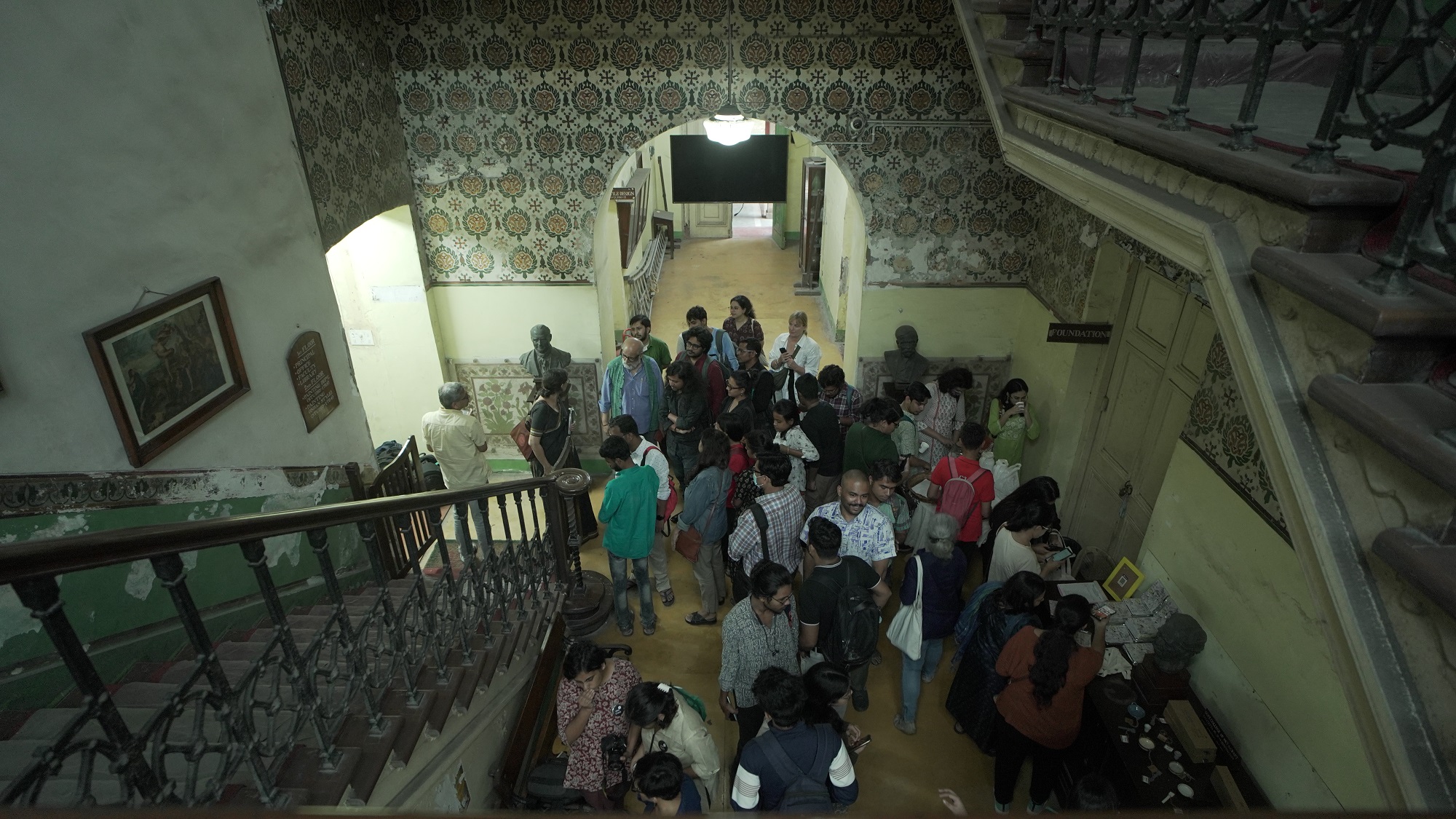
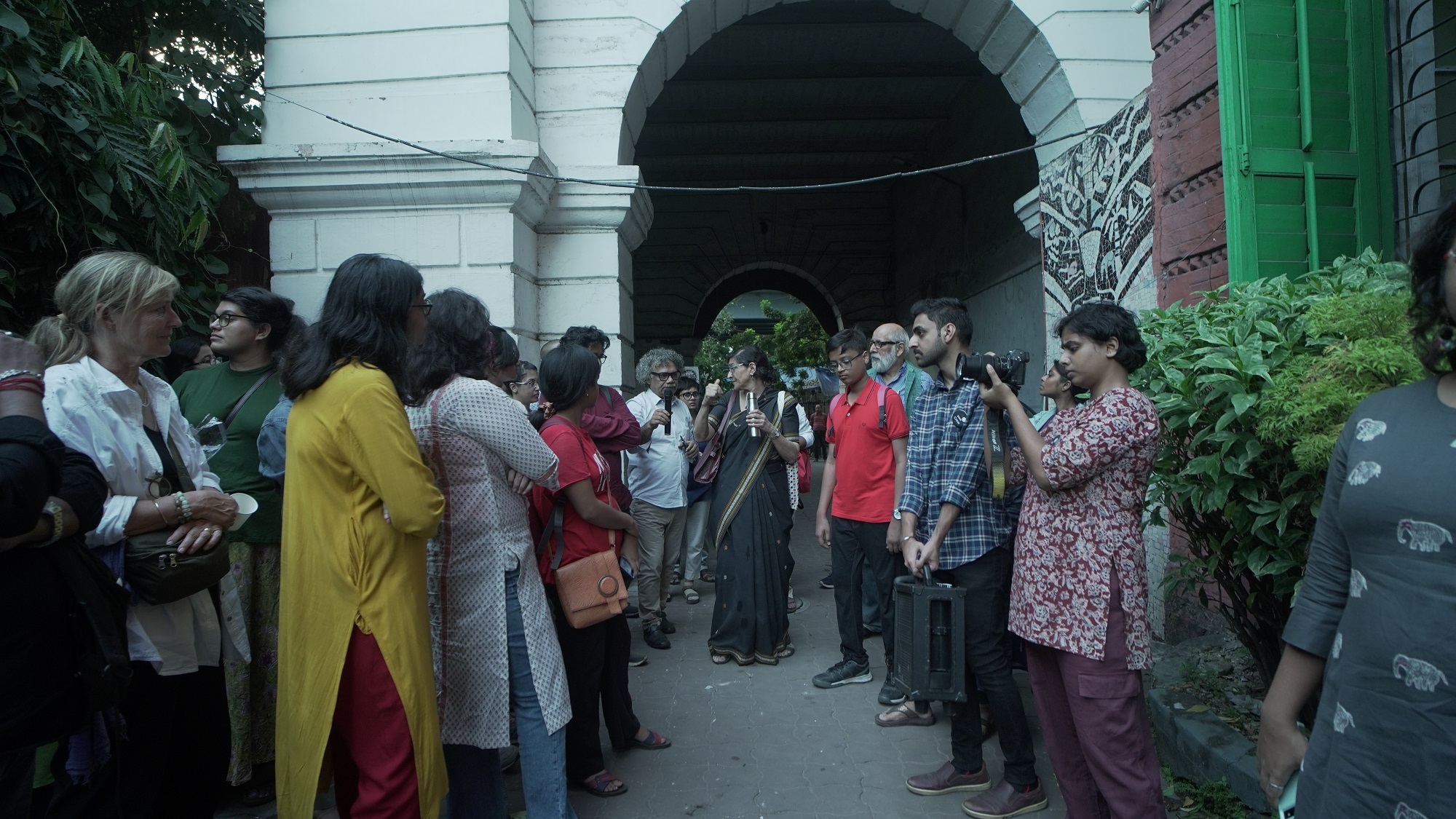

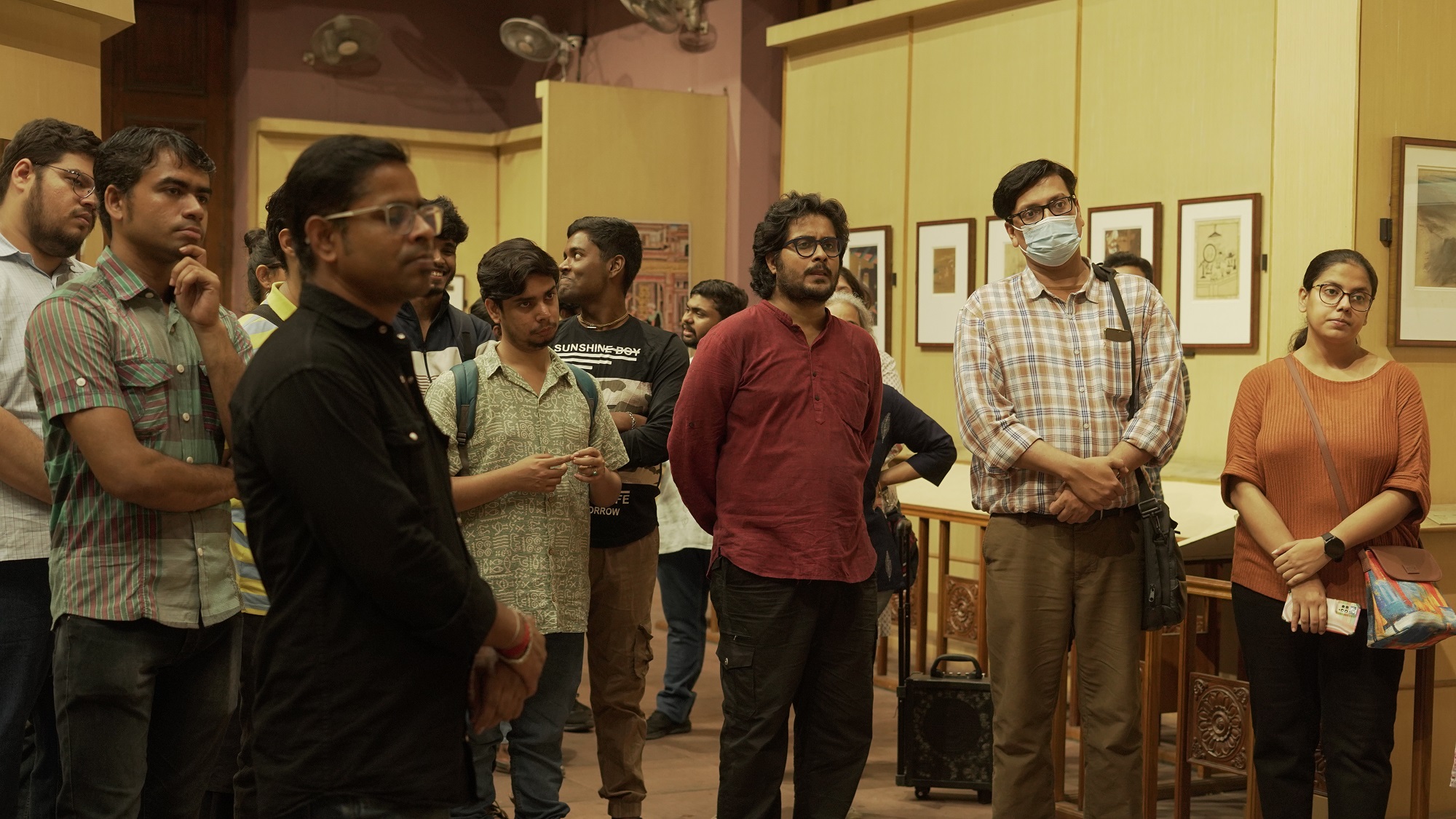
ORIGIN STORYDr. Tapati Guha-Thakurta opened the festival at The Government College of Art and Craft (GCAC), as she traced the lineage of colonial connoisseurship, and pedagogy of design by exploring the category of ‘industrial’ and ‘decorative art’ objects, which bring together the intertwined histories of the Indian Museum and GCAC. Definitions of ‘art’ and ‘industry’ were changing in 1886 when ‘The Journal of Indian Art’ under the editorship of John Lockwood Kipling and Holbein Hendley, then serving as the Principal of the Mayo School of Arts, Lahore, and as the principle commissioner of Exhibitions and Museums in Jaipur, respectively, carried the most textual and visual documentation of Indian ornamental art-ware and of practicing craftsmen, most of whom were working under the tutelage of art schools. These artisans and art students were commissioned to produce ‘art manufactures’ which then circulated in a consortium of industrial art exhibitions, schools and museums in colonial India and the West. Objects from the Calcutta International Exhibition and the Delhi Durbar Exhibition of 1902 are now part of the Decorative Arts section of the Indian Museum, some of which we were able to see during our walk to the Indian Museum. |
|
‘We are thinking of a network of three institutions, each essentially imperial in its scope, ambition and intent. One is the institution of the exhibition - the great exhibitions which are called World Fairs which bring together the 'arts manufactures' and resources of the colony to the heart of Empire. The second are the art schools which again spread from England on the model of the South Kensington new design schools, the new science and art departments - they spread out to the colonies. The 1850s and '60s sees the setting-up of these industrial art schools and they're almost entirely dealing with the industrial and the decorative arts and not with the fine arts. And the third institution is the museum.’ |
|
|
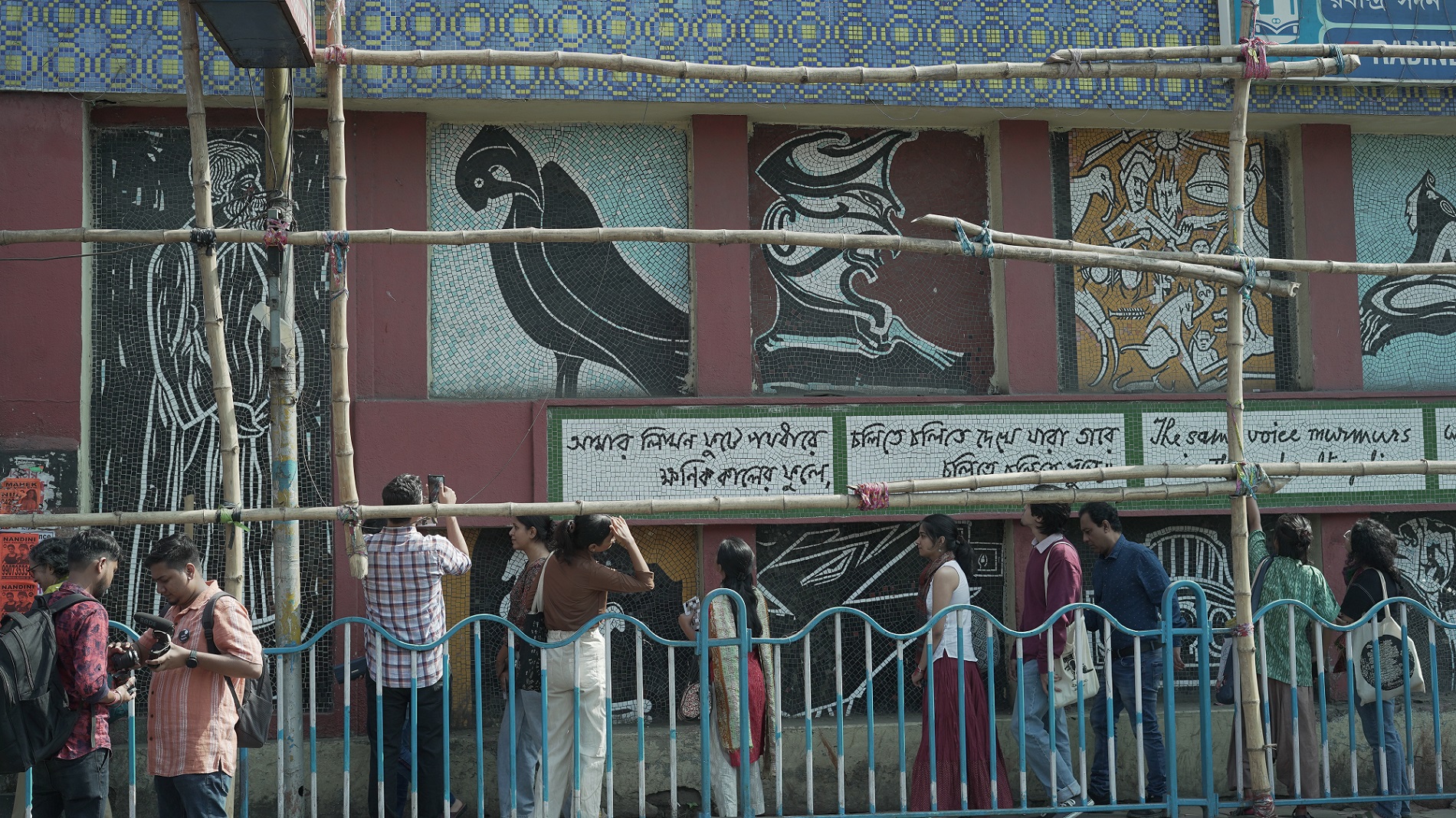
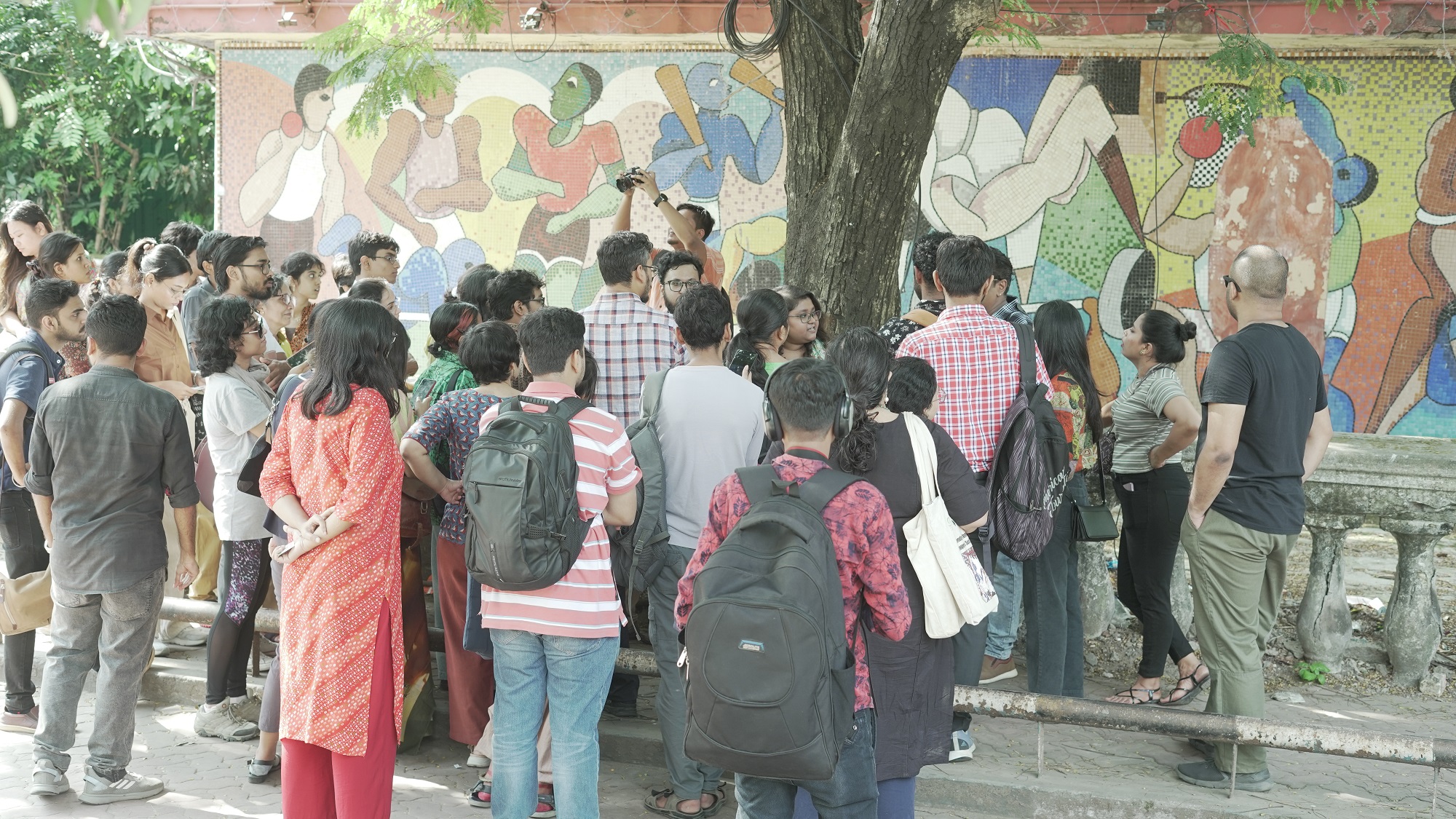

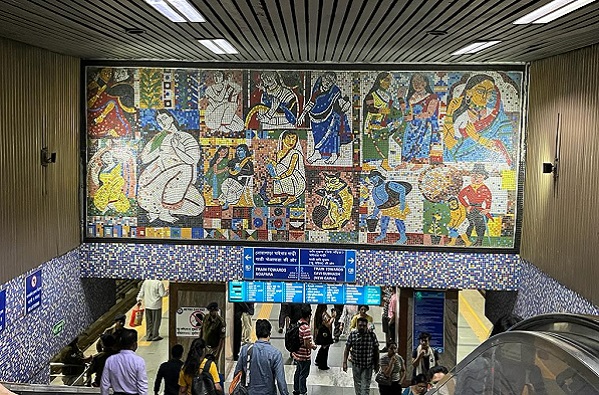
MOSAIC METROPOLISThe next day, we were at the Rabindra Sadan metro station, exploring the commissioning histories, materials and artists who made the murals at various metro stations around the city. Outside the Sadan metro station were images and writings by Tagore which had been transformed into murals for the poet laureate’s 125th birthday. These were executed using a transfer board. Although most Metro murals are unsigned, we traced a few works at Rabindra Sadan, Maidan and Kalighat stations that were designed by teachers and students at Santiniketan’s Kala Bhavana, including Nandadulal Mukherjee and Sukhen Ganguli. At Esplanade metro we saw a mural painted in panels on fibre-glass by Anjolie Ela Menon. We also noticed the mosaic patterns on each station and how it changed at each stop. Designers from the National Institute of Design, Ahmedabad were brought onboard to decide upon the original colour schemes, which were differently coloured to colour-code stations in the minds of the visitors, giving each of them a special identity. |
|
‘Very recently in our time, new experiments with murals have been done by present artists of Kala Bhavans among them Sukhamay Mitra, Somnath Hore, A. Perumai, Sukhen Ganguli and Arun Pal in different buildings of the university.’ |
|
|
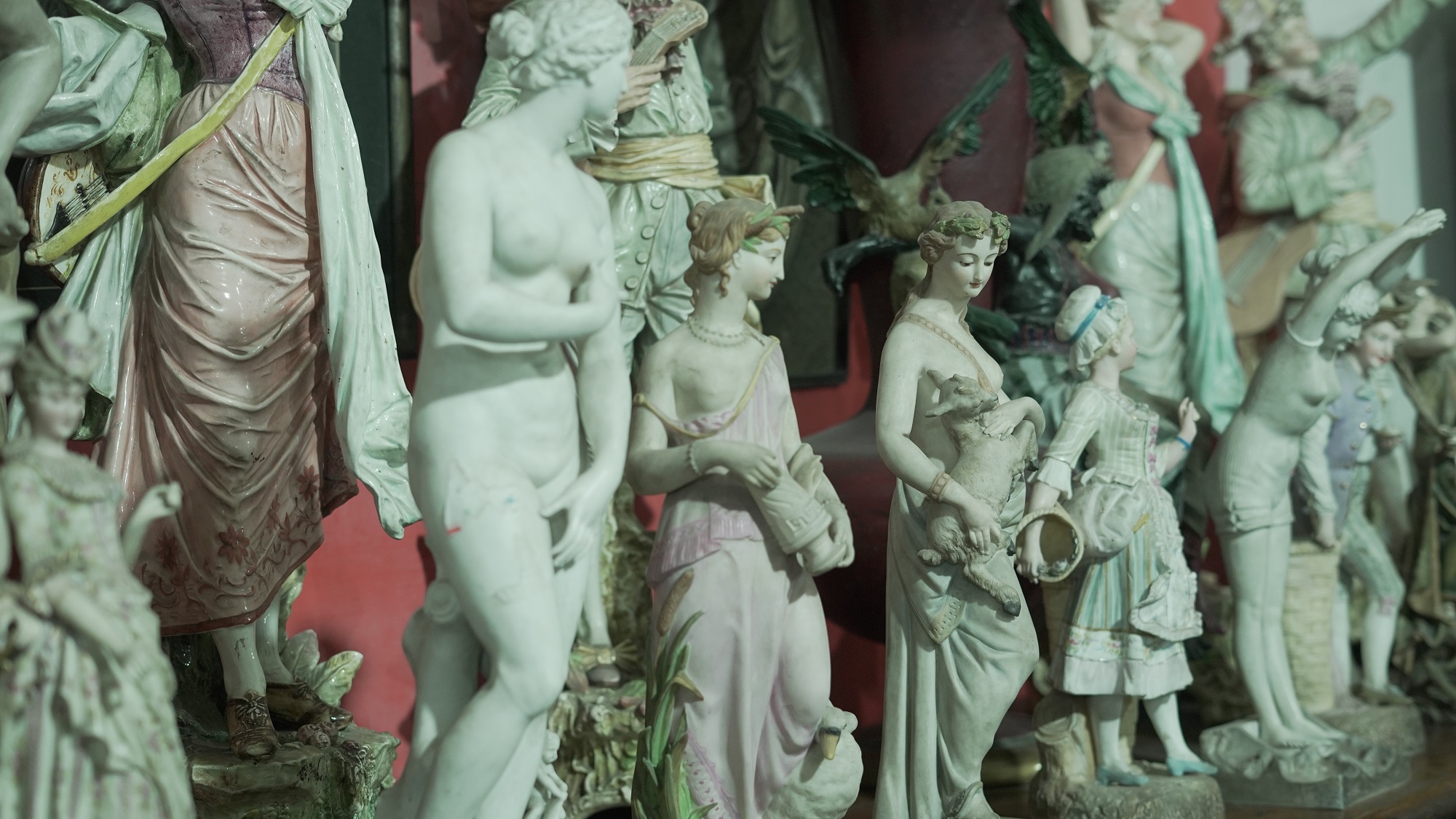
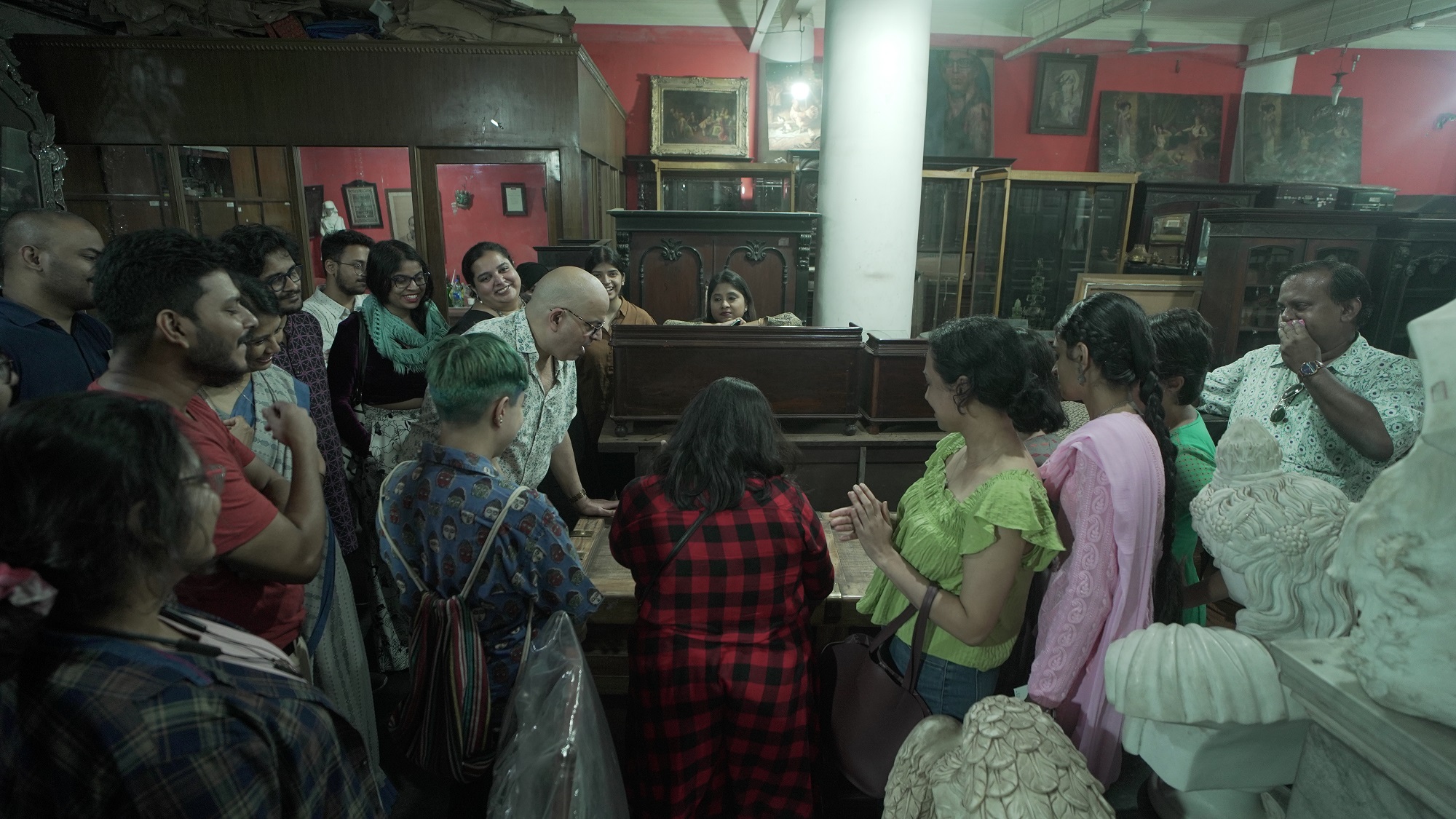
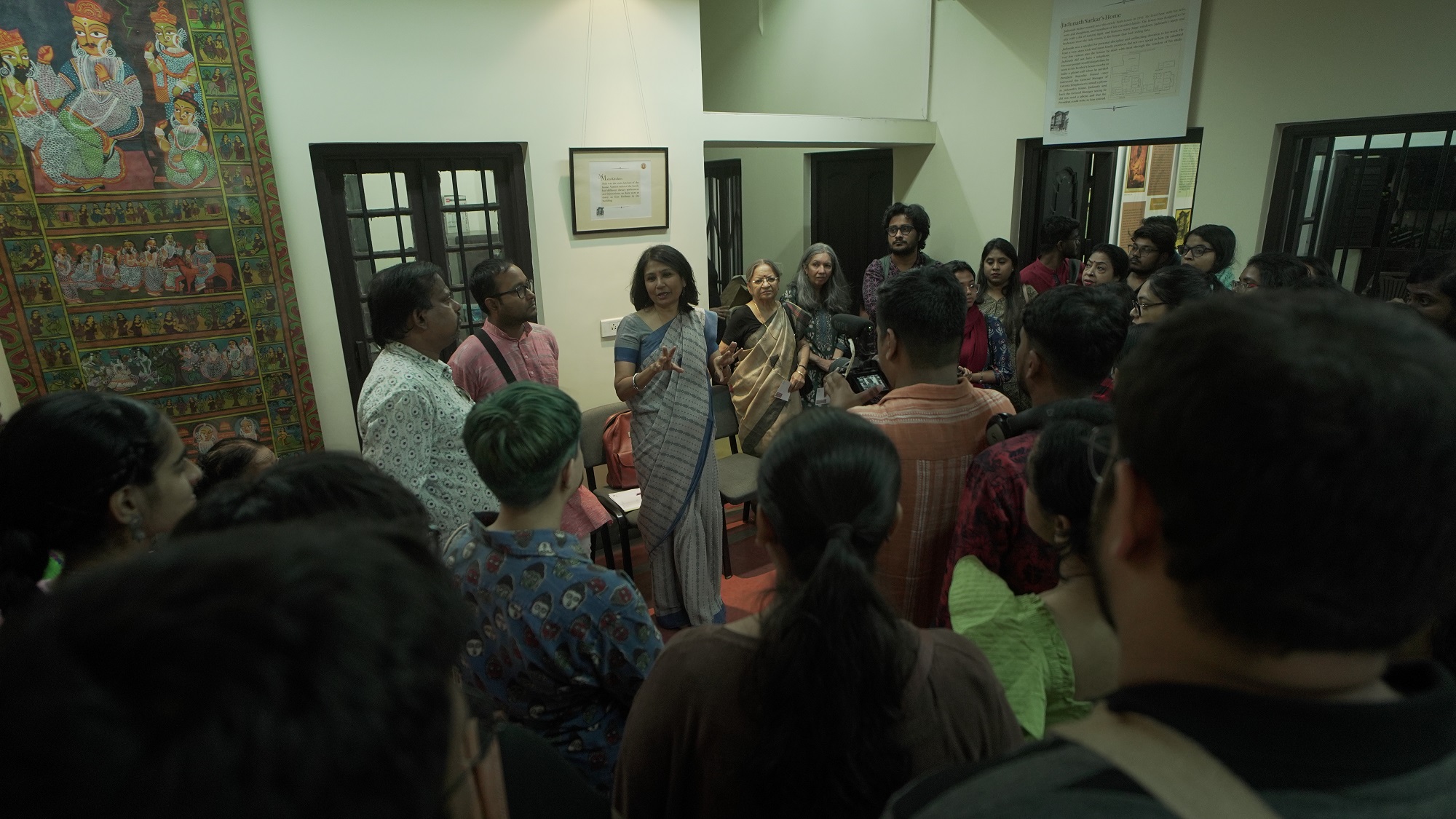
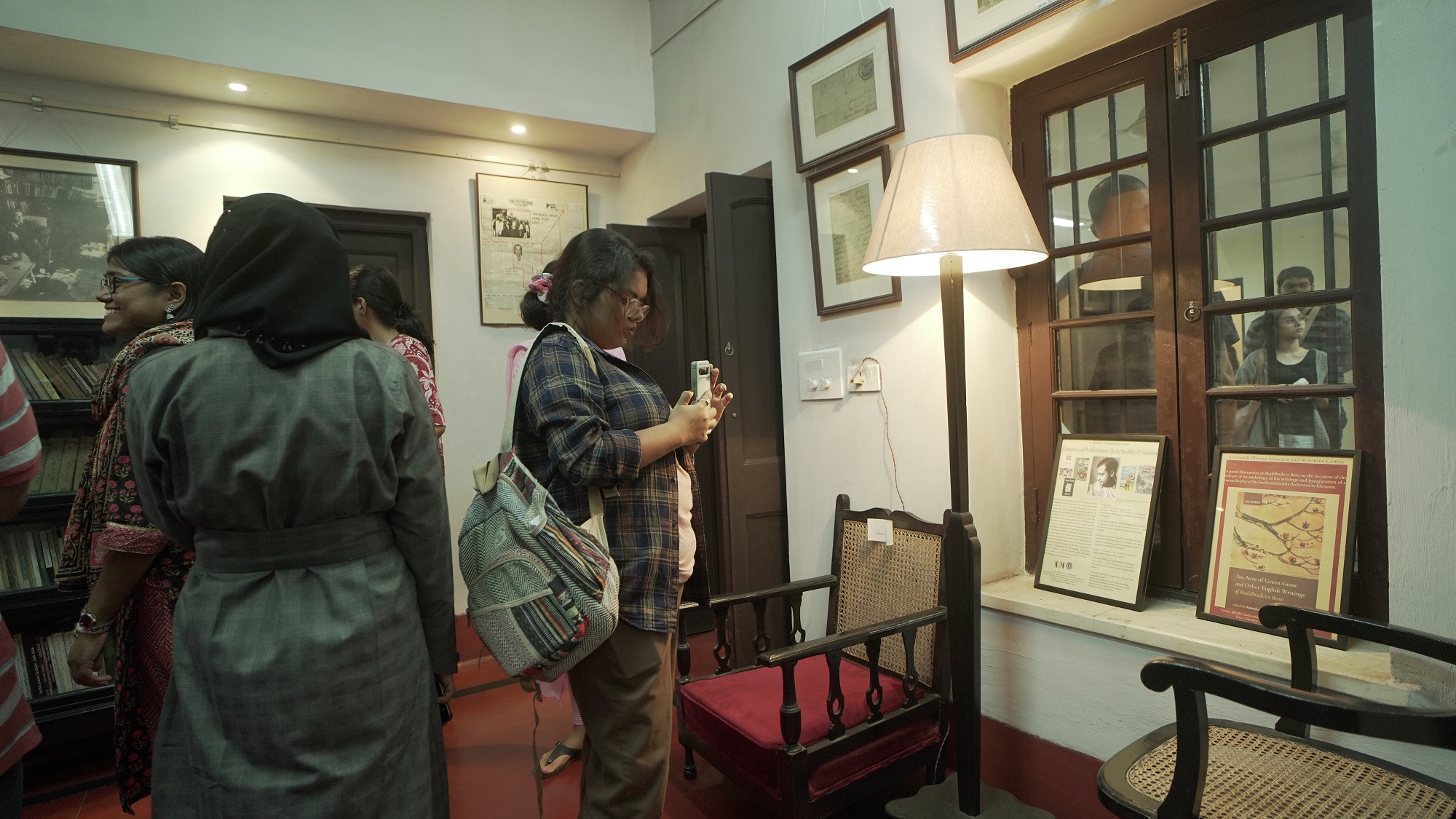
SWADESHI BAITHAKKHANALater that evening, we were at the Karnani Estate warehouse of Schiraaz Medioma Tanksalwalla to explore furniture design in colonial India. Pointing out his large collection of marble sculptures, he spoke about the grand houses of Calcutta and the ways in which European artifacts were adopted locally. A short bus ride later, we arrived at Jadunath Bhavan, where furniture revealed a Swadeshi turn in design history. Through excerpts from memoirs, Professor Rosinka Chaudhuri took us back to a time when the Bengali baithakkhana (drawing room) was evolving from a European-inspired room to adding Indian elements in furniture. |
|
‘A fascinating account of the transformation of the room in the Tagore house at Jorasanko in Calcutta is given by Abanindranath Tagore (1871-1951) in his memoirs. He recreates how in its older function of the baithak-khana at the time of Dwarkanath (1794-1846, Rabindranath’s grandfather), the huge hall, covered in an immense red carpet woven with white flowers, would be bustling at night with bewigged and powdered British dignitaries, arrayed on intriguingly carved cushioned mahogany couches watching native performers.’ |
|
|
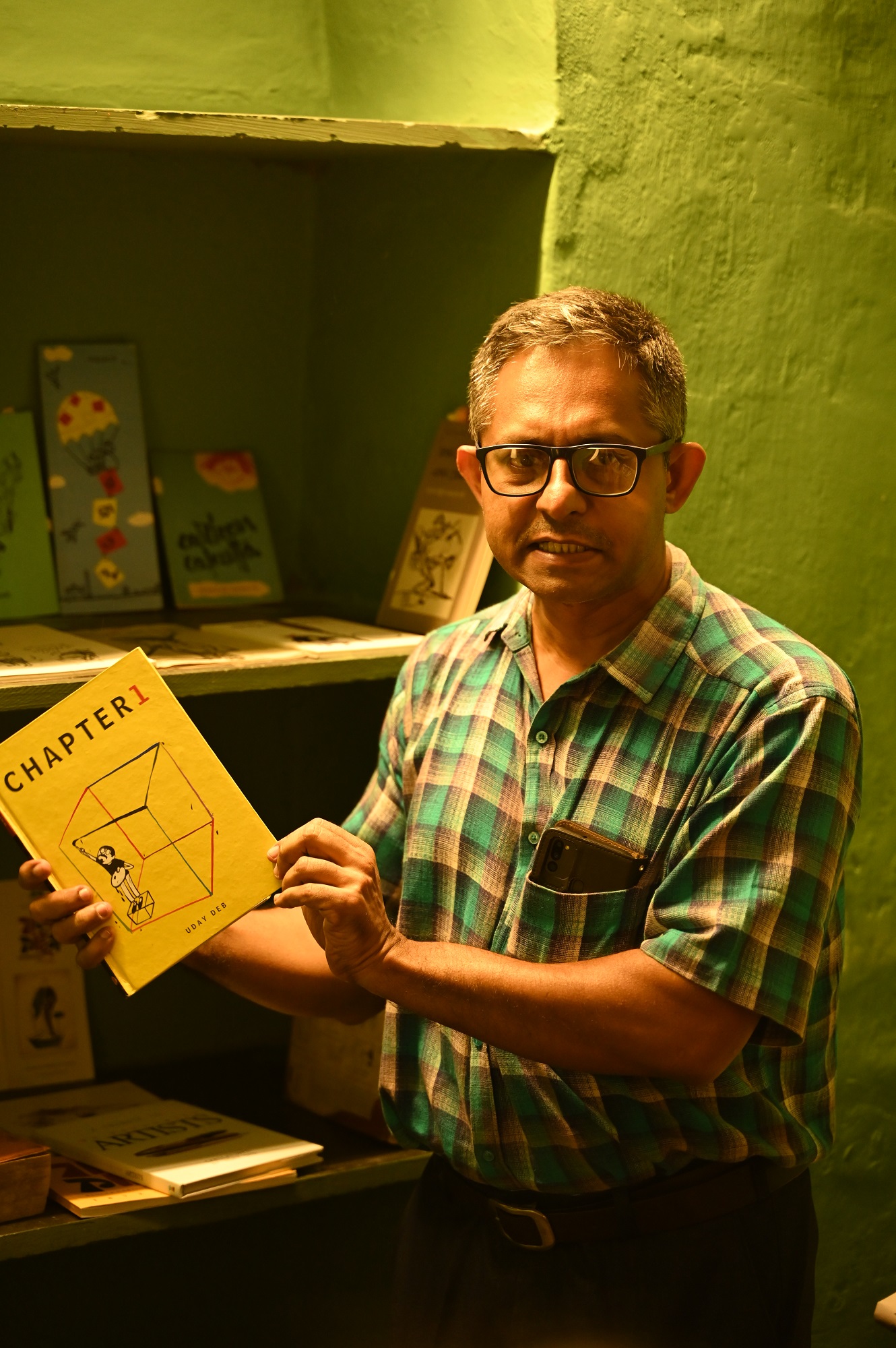

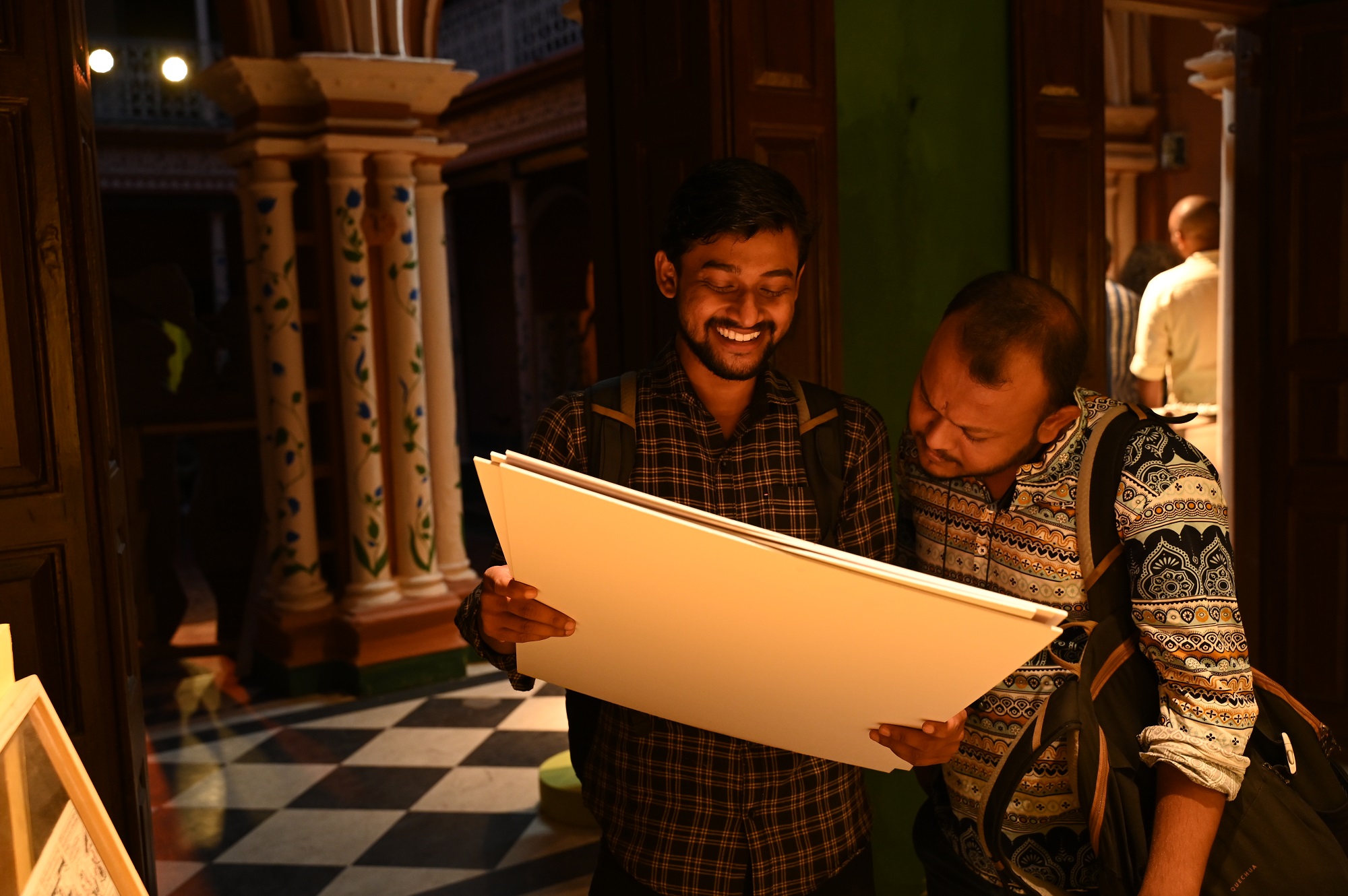
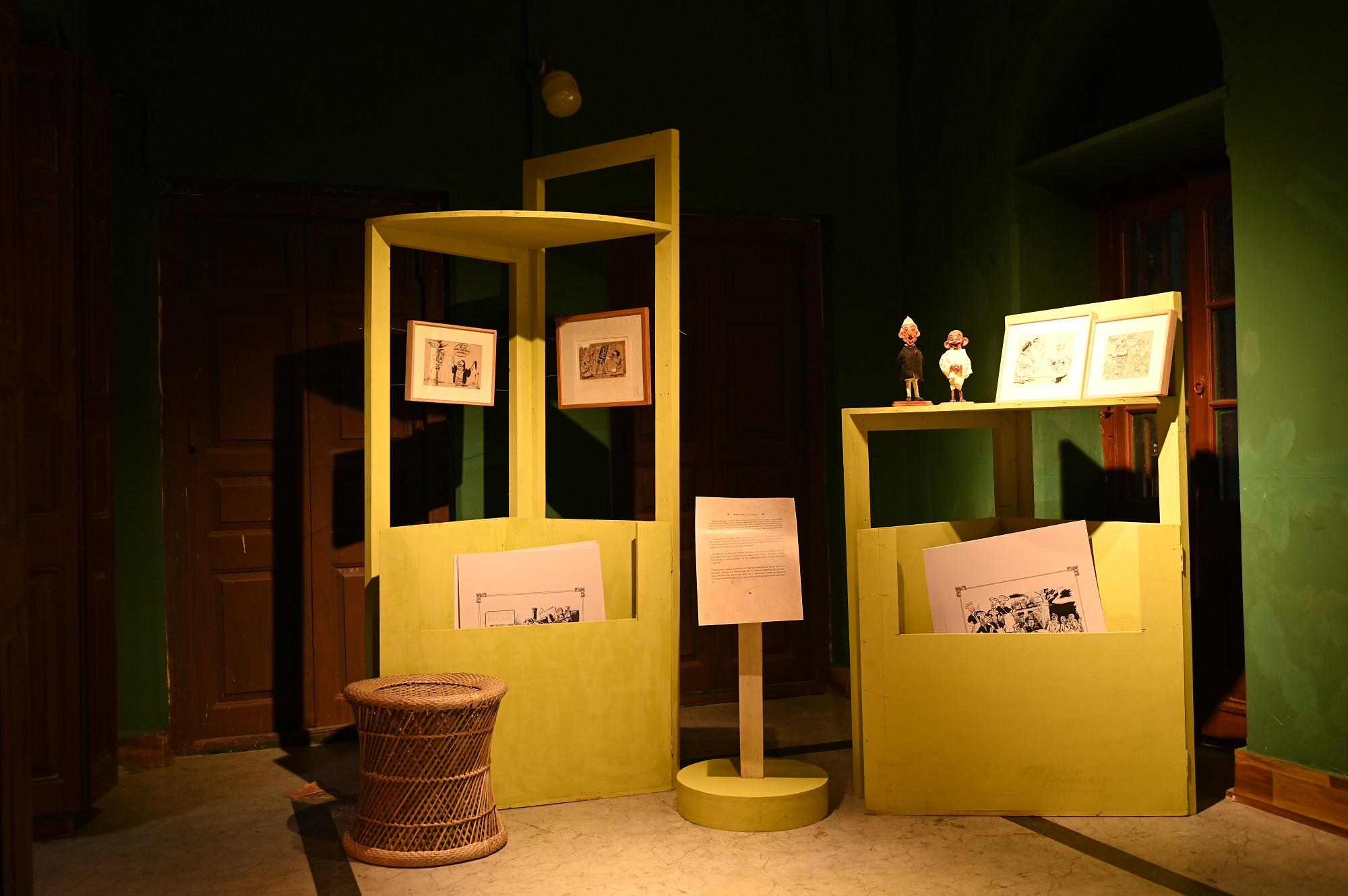

BYANGA DARSHANOn Sunday, we were at Haritarki Bagan Bari with Cartoon Dol, the first Bengali cartoon collective in Kolkata. There, Uday Deb told us how the art of cartoons was viewed by the Rajya Charukala Parishad and why it needed to change to promote cartooning in Bengal. Cartoon Dol has an extensive archive that they have amassed over the years, which includes little magazines and publications on Bengali cartoons, which are no longer published anymore, along with an original print by Charlie Hebdo. A pop-up exhibition featured archival material from Cartoon Dol like political cartoons by Rebati Bhushan Ghosh, who was trained by Abanindranath Tagore and contributed to some of the most popular children’s magazine of his time and Prafulla Chandra Lahiri or Kafi Kha as he is popularly known. Juxtaposed with these were rare coloured cartoons by R.K. Laxman from the DAG Collection, that he had possibly created for the S.B.I. The evening came to an end with a concert by Chandrabindoo. |
|
‘The West Bengal government has a mela called the Rajya Charu Kala Mela. In that mela, it has been seen from times immemorial that political cartoons and posters have been considered low art. One day, Hiran da said that exhibiting sculpture and paintings are allowed for free in the Mela – so why can a poster stall or political cartoon stall not be there as well? The Parishad accepted this proposal gladly!’ |
|
|
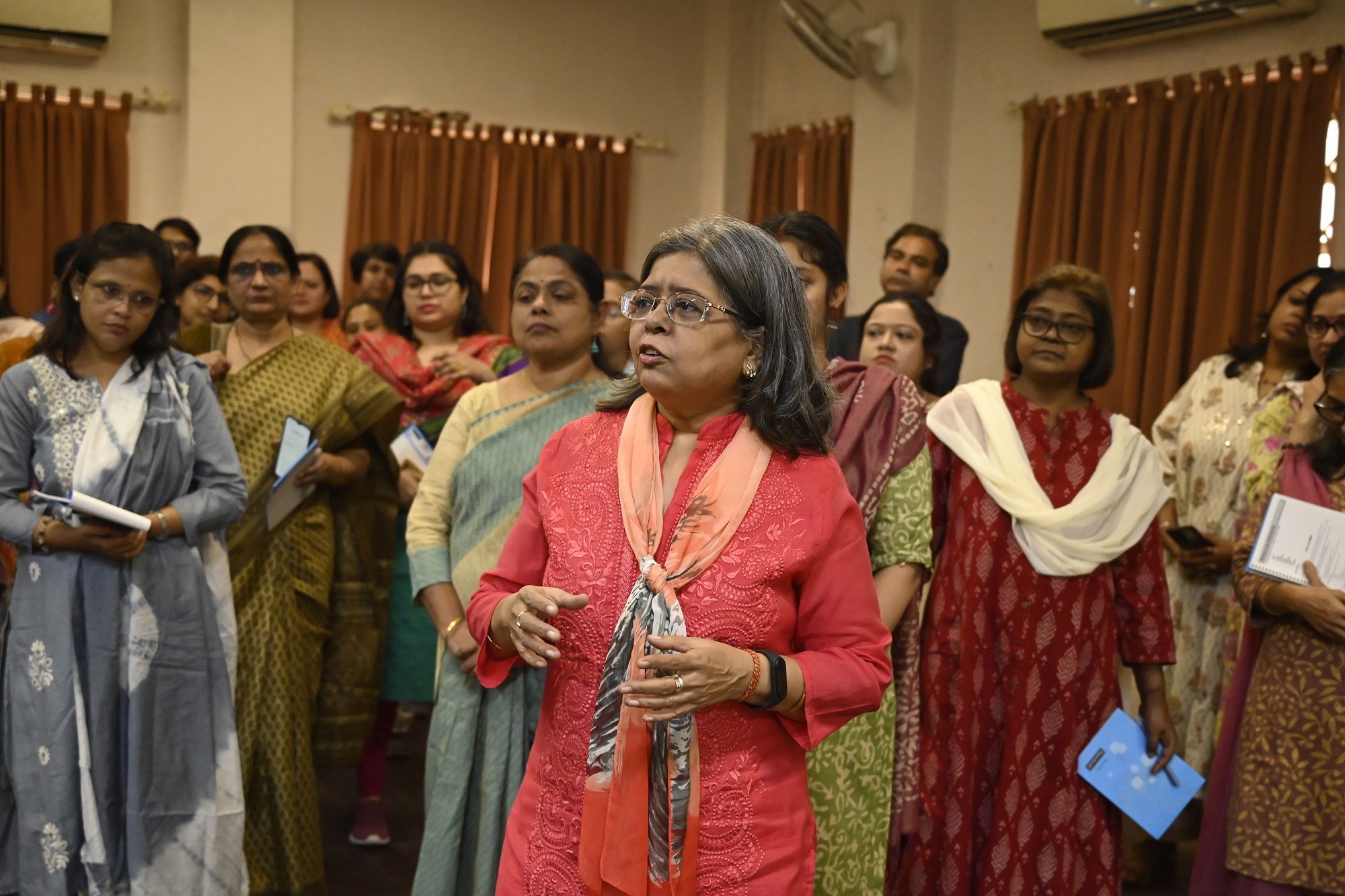
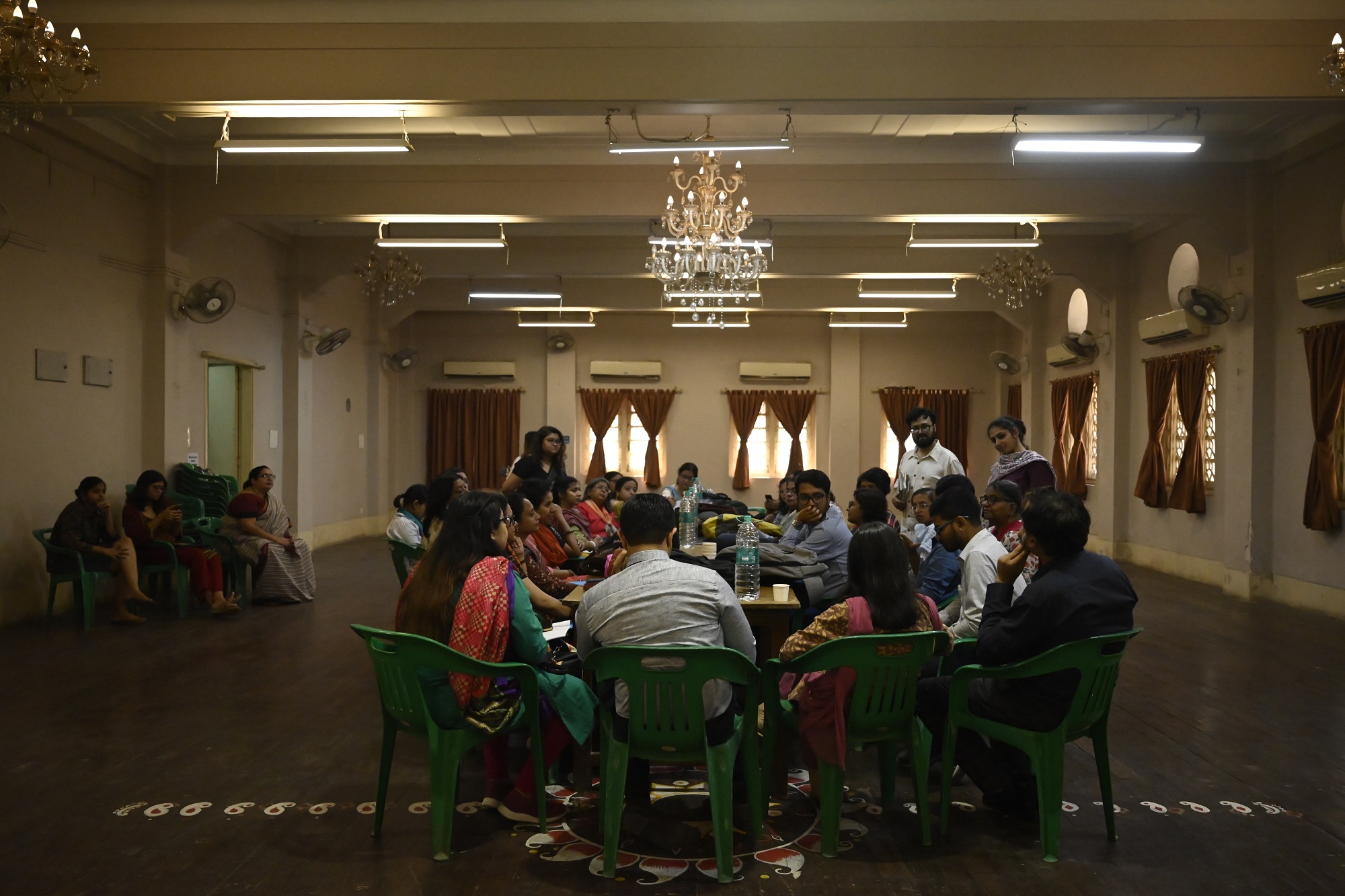

TEACHERS’ WORKSHOPOn the fifth day, we were at Jorasanko Thakur Bari with twenty-six teachers from schools around the city. A trip to the Thakur Bari is a mandatory part of many schools and in the workshop, we looked at various objects of the Tagore household like clothing and art materials for a more nuanced narrative for students, moving beyond the conventional museum narrative. While at the Western Painting Gallery, we observed the portrait paintings of the Tagore family and interpreted what way each of them wanted to appear as, by looking at visual clues in the portraits – Dwarkanath highlighted his business across waters, by having a backdrop of the sea. We looked at the painting materials of Abanindranath when he was learning the wash technique from Japanese artists and pointed out the specific kinds of brushes that he was using at that time. After the tour, teachers pondered on the ways they already use the museum in the curriculum and how a better engagement can be crafted. Moreover, they also considered the ways in which students could arrive at their own interpretations and conclusions about historical objects and narratives. |
|
Watch this space as we bring you highlights from all the other events that unfolded as a part of 'CIty as a Museum', 2023! |
|
|


